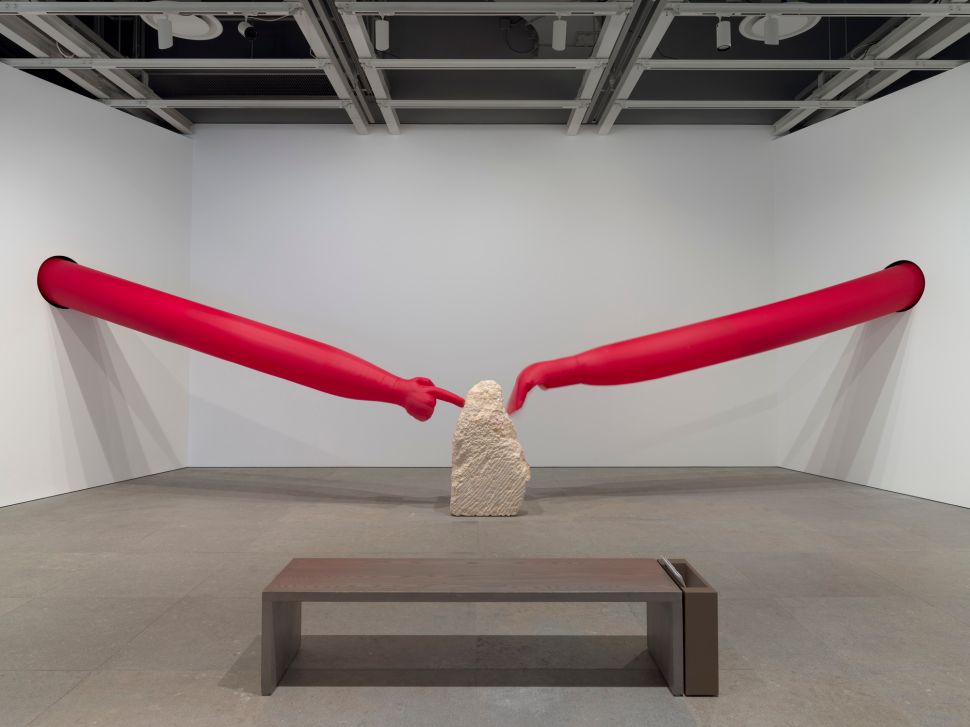“Practically all my life, people have spoken or voiced on my behalf,” artist Christine Sun Kim once said. But at the Whitney, in an exhibition spanning four floors, it’s her voice we perceive in the signature graphs and charcoal notations that fill the walls. For Kim, who is Deaf, art is a language. Her charcoal graphics are deep, at times humorous, critiques of gaps and discrepancies she has noticed between the hearing and Deaf worlds. “Flight attendant leaves suitcase on the runway because when asked in spoken English no one claimed it,” she writes in a piece titled Degrees of My Deaf Rage in the Art World. On paper, Kim unleashes frustration—her rage, as she calls it—inspired by experiences that are honest and, at times, intense.
Kim’s lifelong search for sound and its meaning is apparent in her survey at the Whitney, which ranges from the early 2010s to 2024. In one of her early sound-performative works, Selby Circle (2011), she drops paint brushes on a rattling beating drum, creating images on the drum pad—she’s searching, here and elsewhere, for sound’s visual equivalent. However, that early work falls flat in comparison to the newer pieces that surround it. In her recent drawings, charts and musical notation are abundant—notes suspended in mid-air, ungrounded by a staff, symbols of the idea of sound rather than a map of sound itself. The charcoal she frequently uses evokes another layer of tactility. Her smudges are visible, the motion of her hands resonating across the paper—the same hands she uses to sign.
SEE ALSO: Leonor Fini’s Mythmaking, Masquerades and Resurgent Market
In her day-to-day, Christine Sun Kim is surrounded by a panoply of languages. Her partner, artist Thomas Mader, is German. They speak to their child in their shared and individual languages: English, German and ASL. American Sign Language could be said to have multiple alphabets within it. ASL uses not only hands but facial expressions, as well—something she jokes in her work as being difficult with a German partner whose engagement with facial expressions is culturally subdued. In their collaborative work, Sun and Mader find common languages of sight and sound, discovering new gestures and words together in video pieces. Their attempt at translation is felt and heard, even through the screen and even in languages the audience might not understand. In their largest collaborative piece, ATTENTION (2022), two large red hands inflate and deflate on each side of a large stone. One finger taps the stone, and the other hand gently strokes it; the wall text suggests that, in ASL, “a common method of attracting another person’s attention is by waving your palm downward within their field of vision.” Getting attention or bringing someone’s attention to something can also mean raising awareness. As part of the exhibition, the Whitney is providing ASL tours, something that has been previously available at the institution and other museums but one hopes will become more widespread.
In the end, all of Kim’s frustrations and rage blossom into hope. I was surprised that despite all the anger in her drawings, there is still an underlying optimism. She is still searching for a universal language. In One Week of Lullabies for Roux (2018), one of the few sound pieces in the exhibition, you can listen to music composed by several of Kim’s friends, using her text instructions, for her daughter. There is a plush, colorful bench to sit on as you listen through headphones. What you hear isn’t just song; it’s the artist’s community coming together, creating their own worlds of sound for Christine Sun Kim.
Christine Sun Kim’s “All Day All Night” is on view at the Whitney through July 6, 2025.

